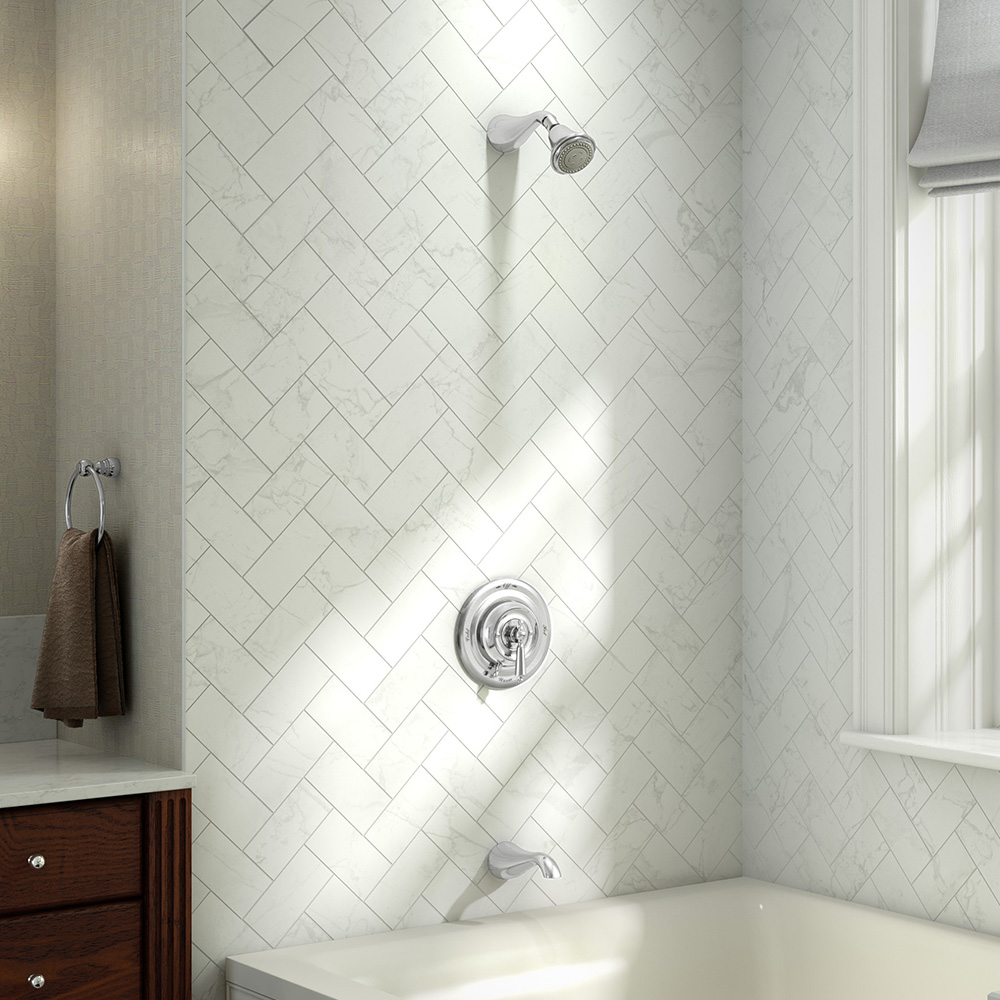5 Things Nobody Informs You about Shower & Bathtub Wall Panels
5 Things Nobody Informs You about Shower & Bathtub Wall Panels
Blog Article
{Visit How do you really feel in relation to Things To Look Out for Before Hiring a Plumbing Company? We recommend that you clean your acrylic bathing product made of Delta ProCrylic or Acrylic with Innovex Technology with non-abrasive soaps and cleaners, such as: When it’s time to clean, always use a terry cloth towel, soft cloth or sponge to avoid scratching the acrylic surface. Don’t use abrasive scrubbing pads, steel wool or sponges, cause permanent damage to the acrylic material. If you use a drain cleaner or clog remover, be sure to rinse thoroughly with water so no product is left standing near the drain. Some chemicals and cleaners may deteriorate acrylic surfaces, causing cracks and, potentially, property damage. To avoid this, don’t use cleaning products that state on their label that they are not suitable for use on Acrylic, ABS, Polystyrene or Plastic. Be sure to check the label of any product before you apply it to the surface; it’s easier to avoid damage than to try to remedy it. Chemicals we do not recommend using to clean acrylic showers/tubs: When you’re ready to apply sealant, a little planning goes a long way. Pick up some painter’s tape and use it to mask off the seam to help make cleaning up easier. When you’re applying the bead, use a constant, steady speed to avoid an uneven finish. Use a caulk tool or a plastic spoon to work the sealant into the joint. Wetting the tool with denatured alcohol will help create a smooth finish. Follow the directions on the back of the tube for cure time. Certain chemicals and cleaners may deteriorate acrylic surfaces, causing cracks and, potentially, property damage. After you’re finished applying it, clean up the product surface and remove any excess sealant with denatured alcohol. Don’t use solvents (turpentine, lacquer thinner, mineral spirits, paint thinner, MEK, xylene, acetone, naphtha, etc.) that can wreak havoc on an acrylic surface. With a little care and consideration, you can prevent damage to your acrylic shower or tub. Keep a supply of soft cloths handy and remove any damaging products or abrasive scrubbing items from the bathroom to ensure they aren’t around when it’s time to clean. https://www.deltafaucet.com/design-innovation/inspiredliving/how-to-clean-acrylic-shower As a passionate reader on Hiring a Plumbing Company, I assumed sharing that excerpt was essential. Are you aware of another individual who is in the market for the niche? Why not promote it. Thanks for going through it.
Acrylic baths, shower trays, and other acrylic bathroom ware have actually come to be a lot more common in restrooms in current times. Not as sturdy as well as classy as enamel and porcelain bathrooms and components, they are more inexpensive and also serve quite a lot the exact same standard purpose. Some typical instances of damage to acrylic shower room fixtures include staining, cracks, holes, etc.Bathroom Staining
With extended usage of acrylic baths comes staining or staining. While some discolorations can be removed quickly, using special chemicals, others call for that the bathroom be resprayed. Aromatherapy oils loosen up the dirt in some situations thereby bring back the bathroom to its previous glory.Chain reaction
Often, people try to repaint the whole surface area of their acrylic bath by themselves either due to the fact that they do not like the shade to conceal imperfections. You need to never ever use paint cleaner on acrylic bathrooms. Paint cleaners do not respond with the surface of steel bathrooms, they destroy acrylic bathrooms irreversibly.Damaged shower or bath surface area
Polymer restroom components are not abrasion-resistant like enamel varieties. They are much more prone to scratches and also much less durable. Being an extremely soft product, acrylic scrapes can also be hidden without covering or filling. For these, you must look for specialist aid for your bathroom repairs. As a prevention suggestion, avoid utilizing rough sponges when cleansing. Rather, you need to use a basic fluid cleanser with a soft pad.Split Polymer Baths
The life expectancy of acrylic as well as fiberglass bathrooms is up to 15-20 years for shower frying pans and baths, normally. Splits in an acrylic shower tray are most likely amongst the most convenient problems to fix for a repair expert. This is the exact same for PVC, material, as well as various other such products.
Polymer bathrooms, shower trays, and various other acrylic washroom ware have ended up being a lot more typical in shower rooms in current times. With long term use of acrylic baths comes staining or staining. You ought to never use paint eliminator on acrylic baths. Paint eliminators do not respond with the surface of steel baths, they damage acrylic baths irreversibly. The life-span of acrylic as well as fiberglass bathrooms is up to 15-20 years for shower pans and also baths, generally.How to clean Acrylic shower
USE THESE NON-ABRASIVE CLEANERS
DO NOT USE THESE CLEANERS
Sealant Application Tips

View